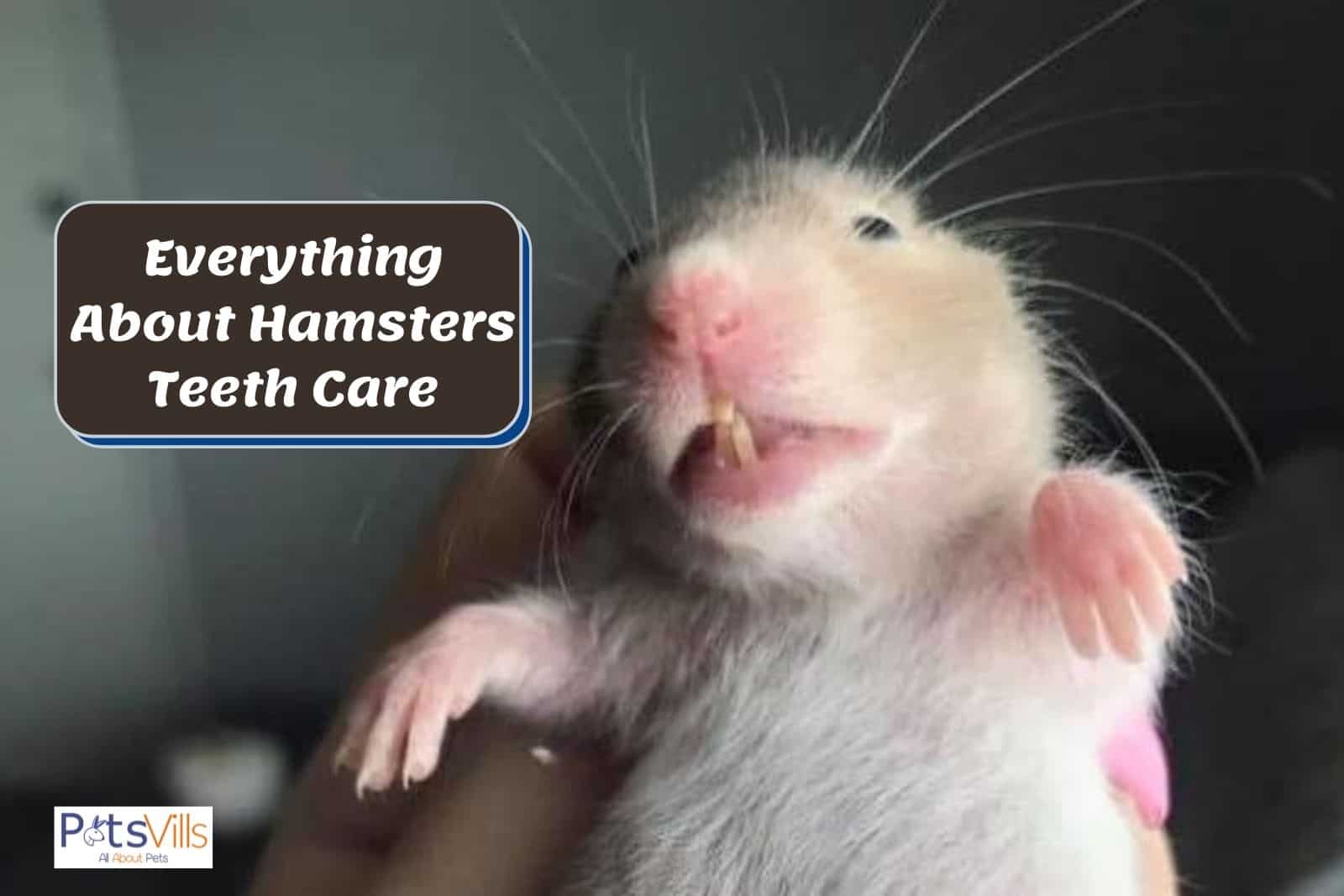Hamsters’ teeth grow constantly throughout their entire life. It’s important you feed your hamster the correct diet and provide them with chew toys to ensure their teeth don’t get too long.
How Many Teeth Do Hamsters Have? Hamsters have a total of 16 teeth which consists of 4 incisors and 12 molars.
It’s important that you understand how to keep your hamster’s teeth healthy to make sure your hamster doesn’t become ill. If your hamster’s teeth become overgrown it can bring them severe pain.
Get the Hamster Handbook for Complete Guide!
Table of Contents
How Many Teeth Do Hamsters Have?
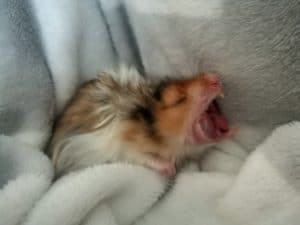 Hamsters have a total of 16 teeth that consists of a total of 4 incisors and 12 molars.
Hamsters have a total of 16 teeth that consists of a total of 4 incisors and 12 molars.
Hamsters are one of the few animals that are born with teeth.
Their teeth constantly grow throughout their whole life, so it’s extremely important that you give them the required food and chew toys so that their teeth don’t get too long.
I’ve written an article on the healthiest and tastiest hamster treats you can give your hamster to make sure their teeth never get too long again.
If your hamster’s teeth get too long it can be extremely painful. If this happens you may need to visit your local vets as they are able to trim hamsters’ teeth to the right length.
Your hamster’s molars are also referred to as his cheek teeth. These grind foods and help pack foods in the cheek pouches.
If a hamster breaks one of its teeth, but the root is still intact, it will regrow its tooth. If the root is damaged or comes out, the hamster will not have that tooth any longer.
Hamsters are small members of the rodent family. The word “rodere,” which rodent comes from, is a Latin word meaning “to gnaw.”
It is crucial that your hamster gnaws on appropriate materials to keep his teeth healthy.
READ MORE: Can Hamsters Take Baths?
Hamsters Teeth Are Always Growing
Like most other rodents, hamster teeth keep growing throughout the hamster’s life.
If your hamster’s tooth doesn’t continue to wear down, you might need to take them to the vet to have its teeth trimmed. This can help prevent dental issues as the teeth help wear each other down.
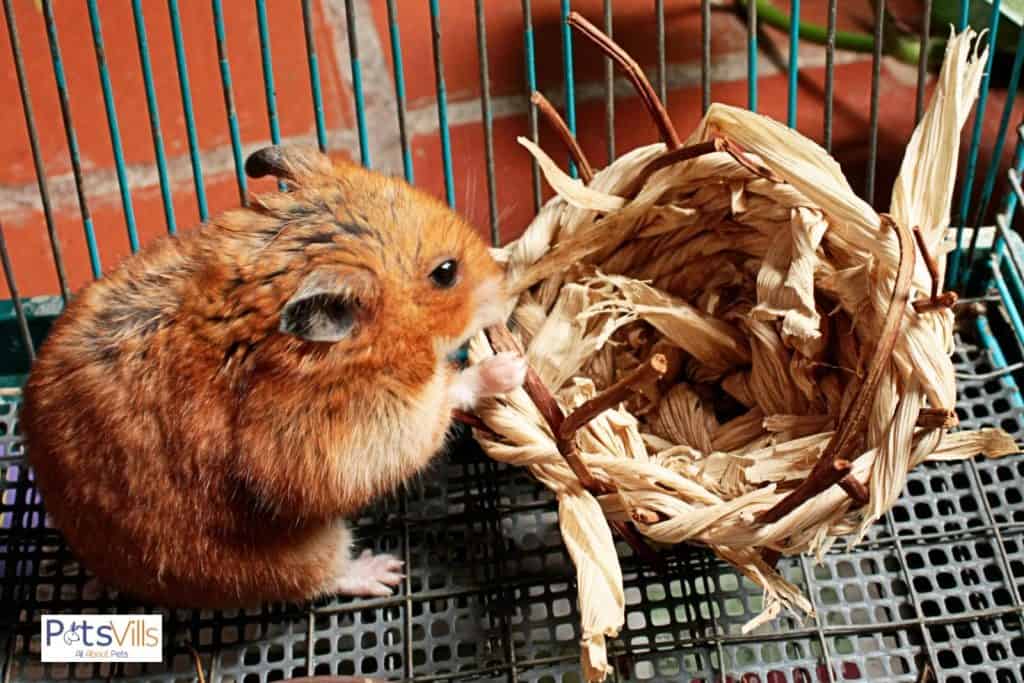
Your hamster may gnaw on a variety of different substances, and you should provide wooden blocks or sticks for them to chew on as well as the correct diet.
Hard food such as pellets is great for your hamster as it will prevent your hamster’s teeth from overgrowing. This helps keep his teeth worn down to a point that they don’t cause any issues.
I’ve written an article on the best hamster chew toys you can give to your small friend to make sure their teeth remain trimmed. These chew toys that your hamster can gnaw on.
Luckily, since hamsters’ teeth are always growing it’s possible for them to break their tooth and be fine because they will often grow back.
Check: Can Hamsters See Color?
My Hamsters Teeth Are Overgrown – What Do I Do?

If your hamster’s teeth get too long, his teeth can actually grow into his chin or the roof of his mouth and it can be extremely painful and unpleasant for your hamster.
You can also see one tooth, usually, an incisor, get longer than another tooth. This problem is a disease known as malocclusion.
Malocclusion is usually a preventable problem if your hamster has appropriate items to chew on. Without these and a proper diet, your hamster’s teeth might overgrow and cause issues.
One of the main things that can happen if your hamster develops malocclusion is that he cannot eat. If he can’t eat, he will get thin and eventually starve.
Signs Of Malocclusion
One of the signs of malocclusion is a problem known as “slobbers.” With this, your hamster drools bits of saliva out of his mouth, but this can be hard to detect as hamsters often wipe their face with their paws.
As noted, a variety of issues can contribute to your pet developing malocclusion. One that you cannot really control is heredity; he may just be born with poor genetics.
Constantly feeding softer foods can also contribute to a hamster developing malocclusion. As such, you should feed a diet mostly of hard pellets, which help wear down the enamel as he eats.
Most cases of malocclusion are treatable by a veterinarian. The goal is to get the teeth back to the same length without having them become too short.
Trimming the Teeth
One way that a veterinarian can treat malocclusion is by trimming the teeth.
This is generally done with your hamster awake after having a thorough examination of their teeth. The longer or abnormally placed tooth gets trimmed with a pair of nippers.
Cutting the tooth can result in other problems, such as making a jagged edge that can cut into the lips and gums. It is also possible to break the tooth, which can result in an infection or abscess that has the potential to be deadly.
A safer way of dealing with malocclusion is for your veterinarian is to use a high-speed drill, which files the tooth down. This usually results in a smoother edge that won’t cut into the gingiva or mouth.
What Can I Give My Hamster to Keep Their Teeth the Right Length?
 Feeding your hamster appropriately can help minimize the development of malocclusion. Firm foods such as pellets are the standard for keeping your hamster’s teeth healthy.
Feeding your hamster appropriately can help minimize the development of malocclusion. Firm foods such as pellets are the standard for keeping your hamster’s teeth healthy.
In small amounts, there are a variety of human-grade foods that can be fed to your hamster, but you want to make sure it’s safe to feed them.
Apples and carrots in small amounts are okay for your hamster to get.
A cherry without the pit is also okay for your hamster to eat, but it is essential that you remove the pit. This part of the cherry can be deadly because it contains cyanide, which is toxic to humans and animals alike.
Many human foods are too high in sugar or too soft for regular feedings. A small amount of hardboiled egg or scrambled egg is an okay source of protein, but it won’t wear your hamster’s teeth down the way pellets will.
You should also give your hamster firm things to chew on, such as wooden blocks and chew toys.
These help your hamster wear his teeth down, often evenly, which helps to prevent your hamster’s teeth from getting long or to stop malocclusion from developing.
Your local pet store or online stores will have suitable hamster chew toys that will help keep your hamster’s teeth the correct length.
How to Keep Your Hamsters Teeth Healthy
You can keep your hamster’s teeth healthy by helping them naturally wear them down. You do this by offering them firm things to chew on, such as wooden blocks or sticks.
It is important that you don’t give your hamster any old stick that is laying around. Some woods can be toxic to your hamster, which can have devastating results.
In addition, you want to use chewing material that has not been treated with preservatives or varnishes, which can be toxic to your critter.
Woods that splinter easily can also be a problem as your hamster could get splinters in his cheek pouches or intestines, which can be painful or deadly.
Stick with wooden materials that you purchase from the pet store or have verified that they are safe for your hamster. You can even find houses made out of wood that serve a dual purpose: your hamster can hide in it and gnaw on it.
READ MORE: What to Do if Your Hamster Isn’t Drinking Water?
What Color Should My Hamster’s Teeth Be?
Your hamster should have yellowish-colored teeth. If you see this color, it’s perfectly normal, so you don’t have to worry.
Hamster teeth tend to be yellow. This apparent discoloration compared to human teeth is actually because they have extra enamel, which makes the tooth extra hard for gnawing on the foods that it eats.
If your hamster has bright white teeth, it can indicate that there is something wrong with the enamel or dentin, the layer below the enamel, which tends to be yellow-brown in color.
Some hamsters get more staining on their teeth, and the teeth can appear to be orange or red in color. Check to make sure that their gums aren’t bleeding or see if they might be chewing on something red.
It is possible for your hamster’s teeth to become stained by the foods that he eats, especially those with dyes in the foods.
As such, you want to stick with foods that are naturally colored or check on your hamster’s teeth regularly to ensure that what looks red is actually a stain, rather than blood in his mouth.
How to Prevent Oral Problems in Hamsters
You will find that there are several things you can do to help prevent oral issues in your hamster. These problems can include malocclusion, broken teeth, and cheek pouch issues.
The first major thing to do is ensure that your hamster is fed an appropriate diet. Firm pellets are a mainstay of their diet, with some supplementation of seeds and fresh foods.
Feeding too much fresh produce can give your hamster too much sugar, which is not good for his teeth. These foods are often softer, which doesn’t allow your hamster to gnaw and wear his teeth down.
Hamsters like to pack food materials and bedding into their cheek pouches. It is important that everything you feed be soft enough that it won’t poke or lacerate your hamster’s cheeks.
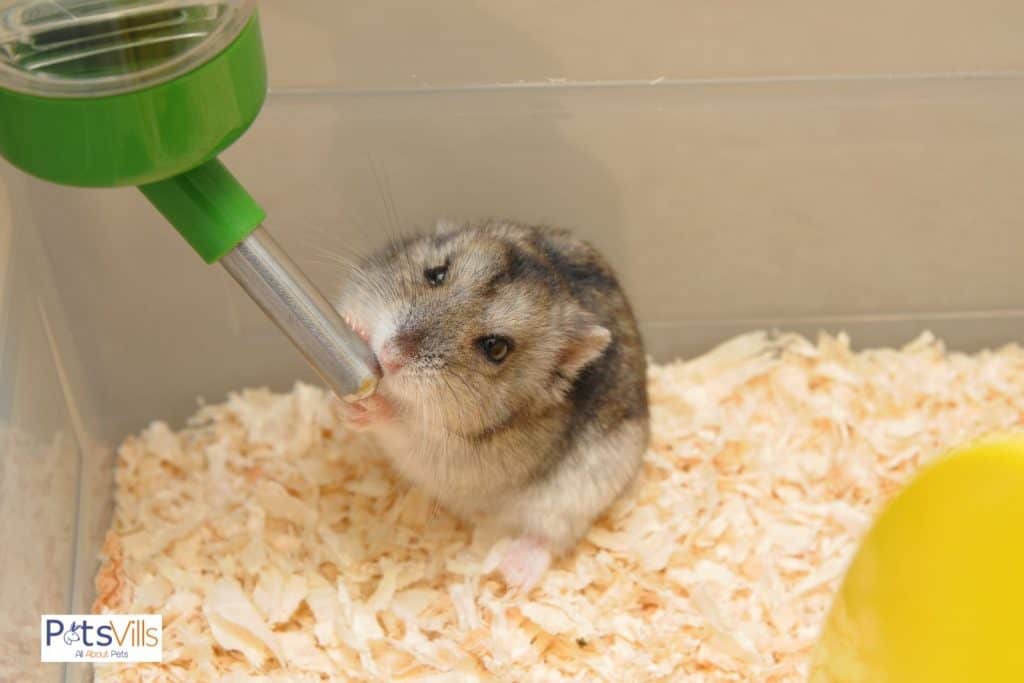
In addition, you want to make sure that your hamster always has access to clean, fresh water. If he doesn’t drink enough water, his cheek pouches can dry out, and food material can impact the pouches.
If food or bedding gets impacted in your hamster’s cheek pouches, it can be very painful and even abscess. Infections are possible, and the cheek pouch can even evert out of the mouth from all of the material stuck in it.
You can also help prevent oral problems by keeping your hamster active and enriched. If he gets bored, he may chew on his cage bars, which can chip his teeth or cause them to become unevenly worn.
Prevent boredom by providing your hamster with a range of activities from running in a hamster ball or wheel to exploring a variety of tunnels in his cage. He might also benefit from having a buddy in his cage.
Symptoms of Dental Problems
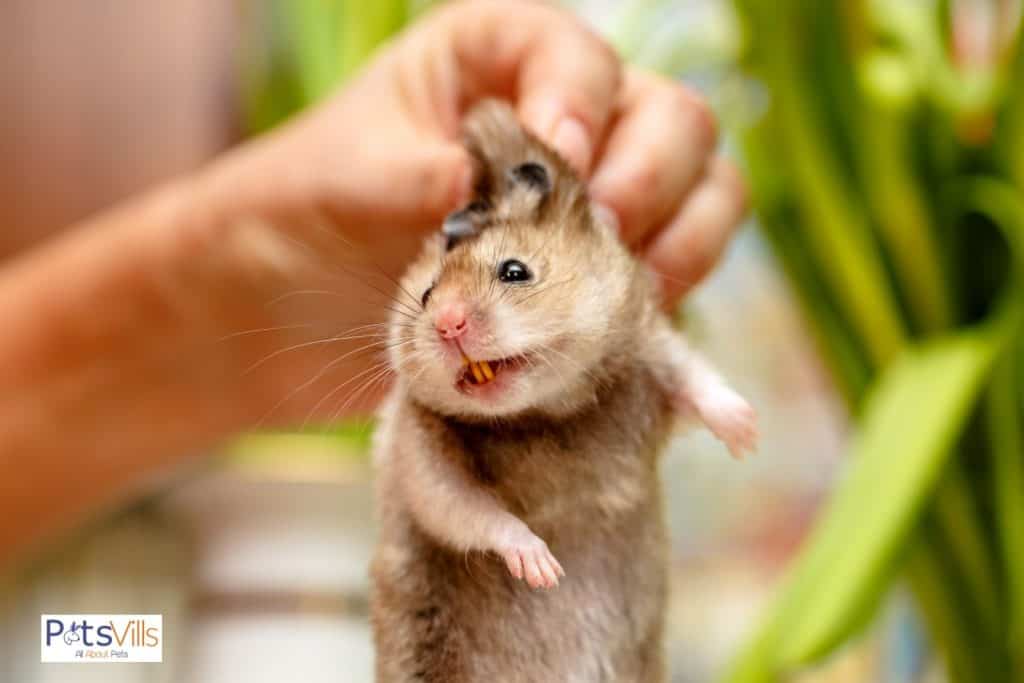
You can see evidence of dental problems in several different ways. The first is by checking your hamster’s teeth directly: gently retracting the skin around the face allows you to look at his teeth.
Your hamster’s teeth should be yellowish in appearance and relatively even in length. The incisors should come together evenly rather than overhang either the upper or lower incisors.
Malocclusion
If your hamster has a malocclusion, it may dribble drool out of its mouth. This is known as slobbers, and it can be hard to detect as your hamster wipes its face with its front paws.
Issues with the gingiva may result in bleeding gums or other problems. It can be hard to check your hamster’s mouth but this is important to help determine if there are any issues going on that need to be treated.
If you see blood from your hamster’s mouth or nostrils, it needs to go to the veterinarian immediately.
Its tooth could be poking into its gums or the roof of its mouth, creating an oral-nasal fistula, an opening between the mouth and the nasal passageways.
Broken Teeth
Broken teeth can also impact the gums and lips. These result in sharp points which can lacerate the oral cavity tissues and cause bleeding or infections.
If your hamster has a tooth issue, he is at a higher risk for bacterial infections occurring in his mouth. Infections can ascend up the root of the tooth and cause abscesses.
Abscesses can manifest themselves in an array of different ways. You might see swelling near the back teeth, usually underneath one of the eyes.
This swelling may burst open with purulent material draining out. If you see this, your hamster likely has a draining abscess that needs to be medically treated.
Your hamster may also develop issues within his cheek pouches. The material can get impacted in the pouches, which can be felt as very firm cheek pouches.
Feeding your hamster material that is sharp or packs down easily can increase his risk of getting impacted cheek pouches.
Not providing enough water can also cause this problem as your hamster’s gingival mucosa can dry out and stick to more of the material he is ingesting.
Veterinarian
Your veterinarian may treat abscesses by draining them and putting your hamster on oral antibiotics. In some cases, they may need to surgically extract the affected tooth or teeth, which will leave your hamster without a tooth.
If the cheek pouches get impacted, your veterinarian will likely gently remove all of the material, such as by swabbing it out.
If the mucosa is lacerated or infected, your vet will likely place your hamster on antibiotics. He may also have to go on a softer diet, which can increase his risk for malocclusion occurring in the future.
Good oral health is important to maintain because your hamster only has one set of teeth, and these constantly growing teeth can grow unevenly and cause issues eating.
If you notice your hamster is having trouble eating, slobbering, or has consistently firm cheek pouches, you should contact your veterinarian and have your hamster evaluated.
If your hamster’s teeth are bothering them, he can’t eat or chew properly, which can lead to a host of other issues.
FAQs
Why does my hamster have yellow teeth?

It is perfectly normal for a hamster to have yellow teeth. If you’re concerned about their teeth health then a visit to your local vets may be needed.
What are the most common teeth problem in hamsters?
Broken/chipped teeth, mouth infections, and excessive teeth growth are the three most common issues with pet hamsters’ teeth. Depending on how severe each one is will depend on the treatment your hamster will need.
Do hamsters teeth grow back?
It’s quite normal for your hamster to chip a tooth. Hamsters’ teeth grow constantly all throughout their life.
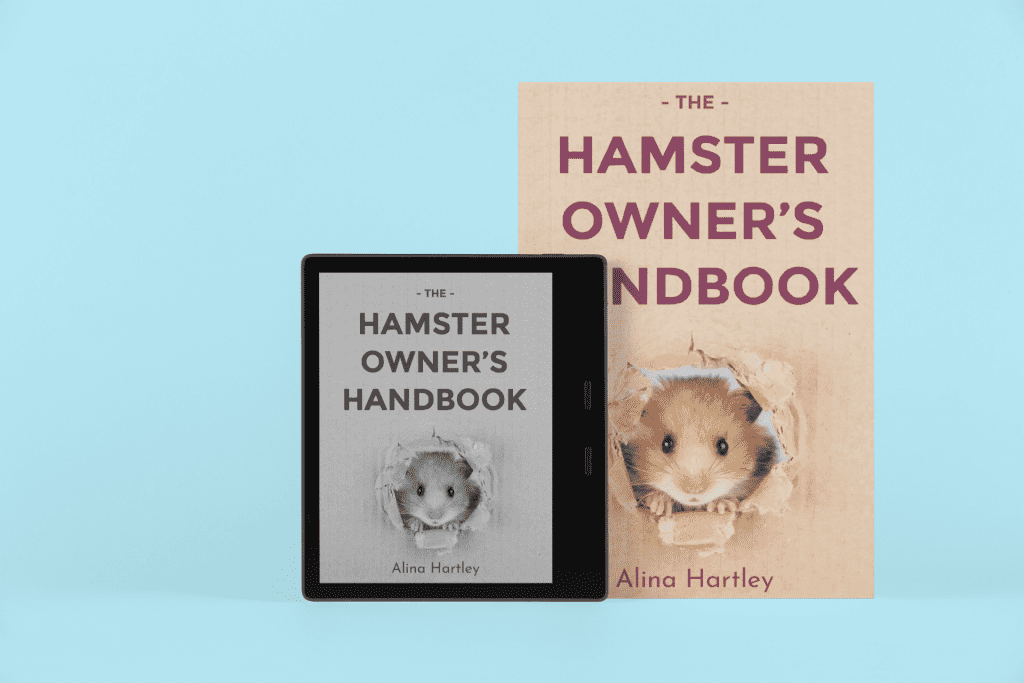

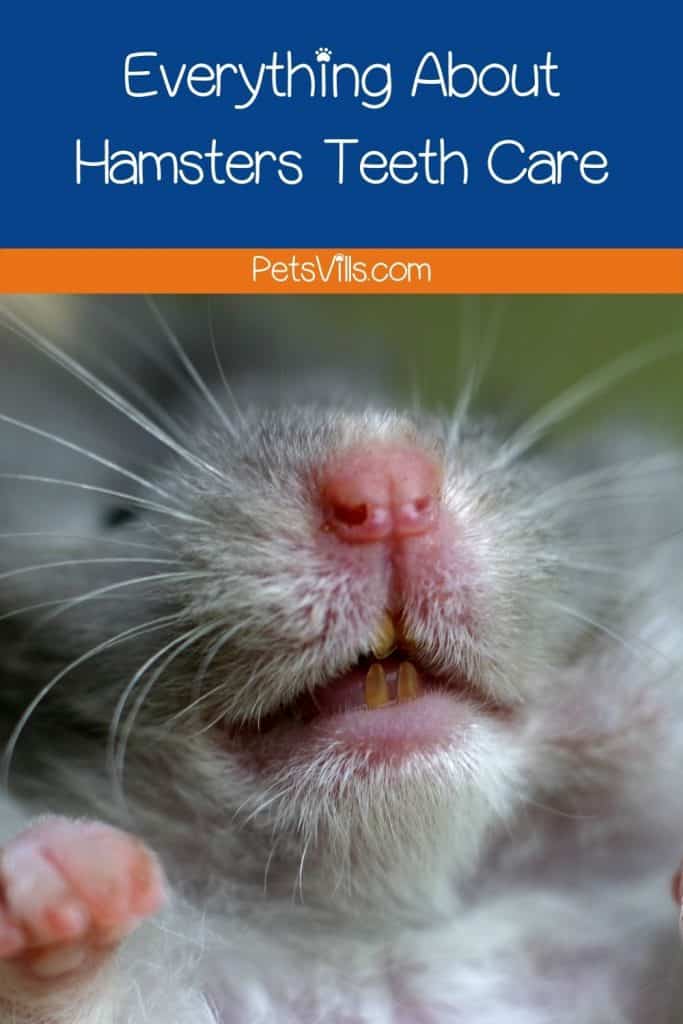
How about you, how do you care for your hamster’s teeth? Let us know in the comments below!
Barry Stingmore is a British content writer living in Fuerteventura, Spain. An animal lover at heart, he shares his home with a dog and four rescue cats and has a passion for writing about animals big and small.
Barry loves finding answers to your animal-related questions, the more research involved the better! You can rely on him to find the facts.
Find him on FACEBOOK, TWITTER AND Linkedin
Read his latest ARTICLES.
Find more about him HERE.

